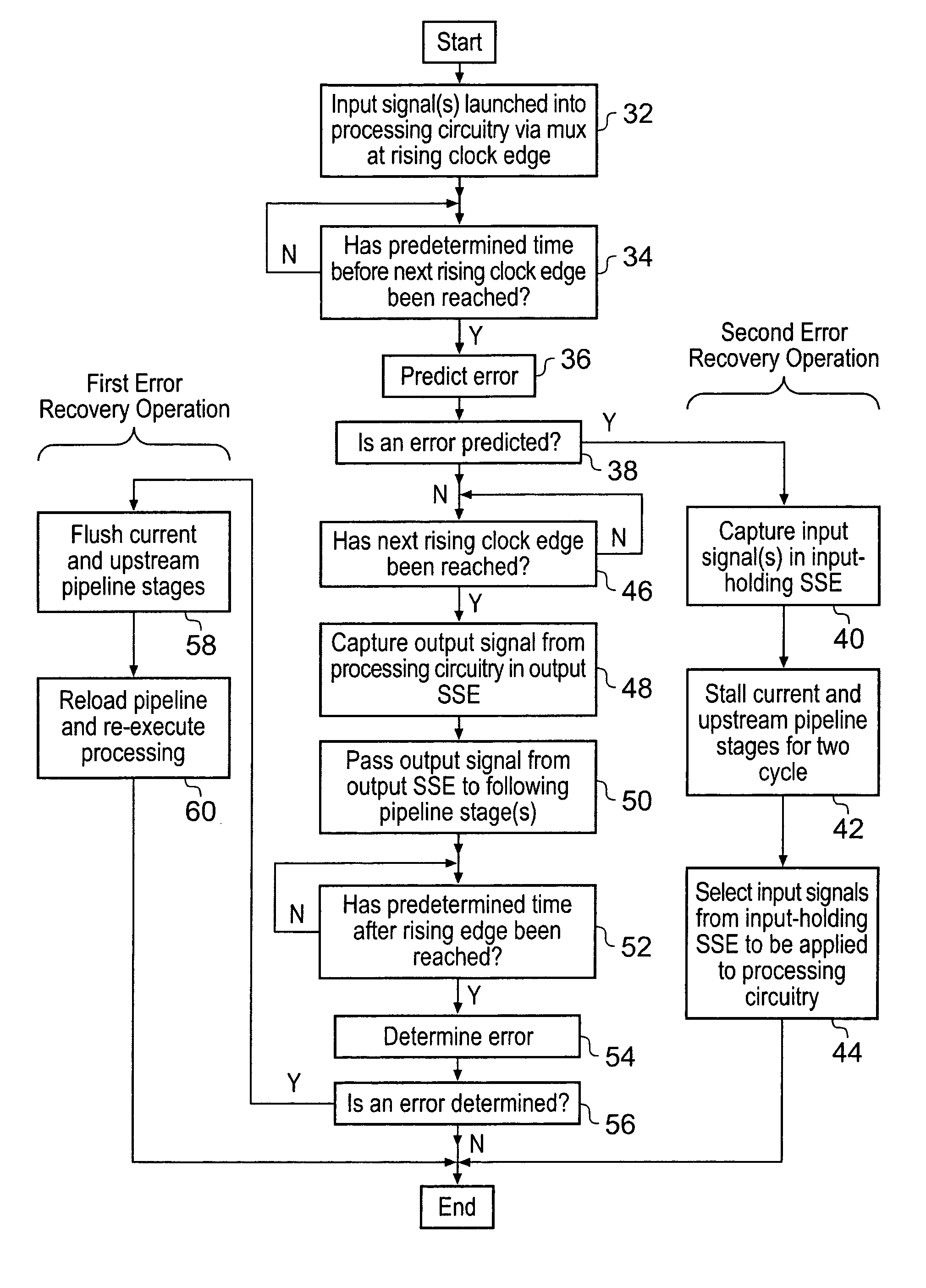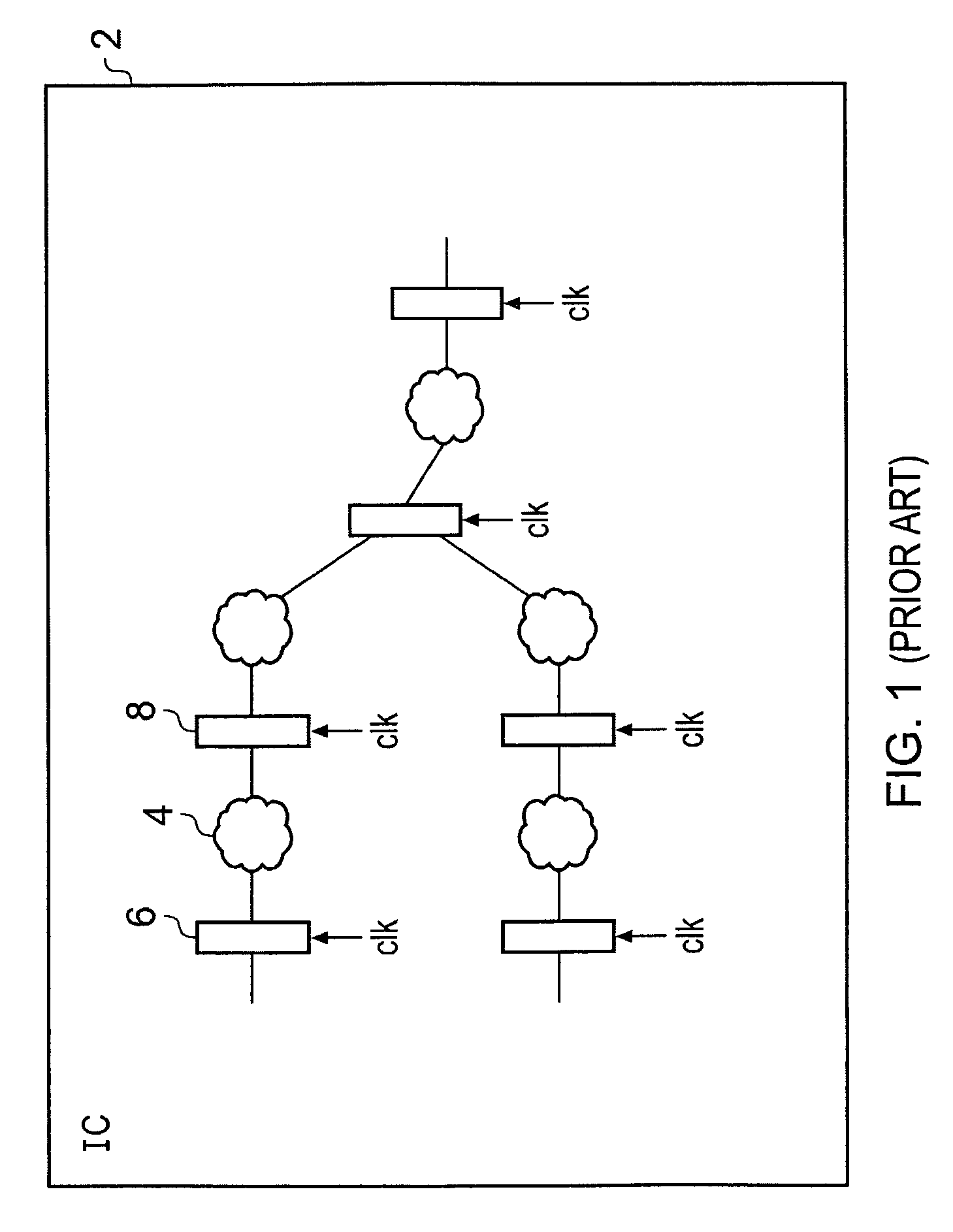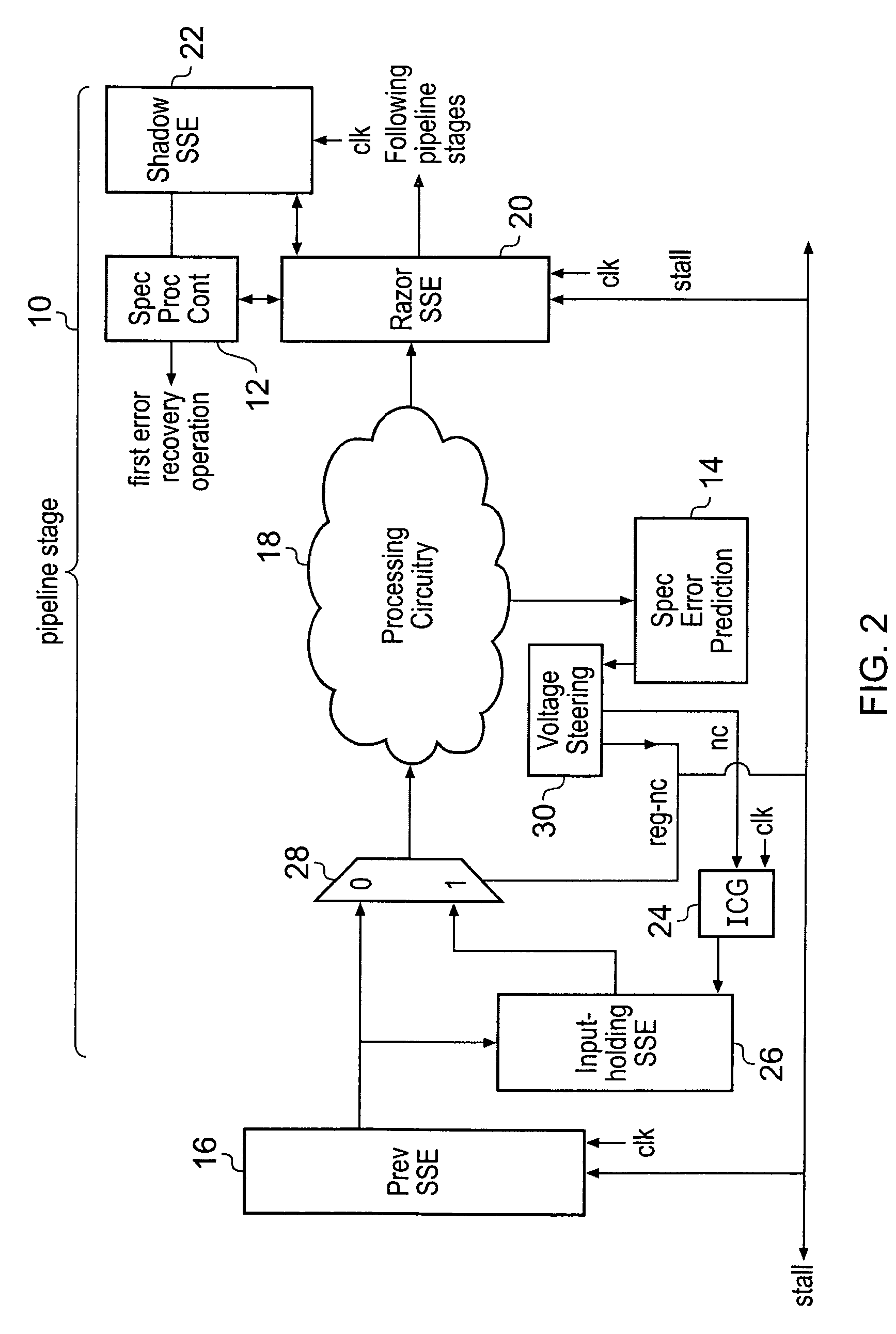Integrated circuit using speculative execution
a technology of integrated circuits and speculative execution, applied in the field of integrated circuits, can solve the problems of performance processors, performance penalties, performance penalties, etc., and achieve the effects of reducing performance penalties, significant performance penalties, and reducing performance penalties
- Summary
- Abstract
- Description
- Claims
- Application Information
AI Technical Summary
Benefits of technology
Problems solved by technology
Method used
Image
Examples
Embodiment Construction
[0035]FIG. 1 illustrates an integrated circuit 2 including a plurality of processing pipeline stages each formed of some processing circuitry 4 with an associated input signal latch 6 and an associated output signal latch 8. It will be appreciated that the input signal latch 6 and the output signal latch 8 could be any form of sequential storage element (e.g. latch, flip-flop, . . . etc) and in the following description the reader will understand that any form of sequential storage element could be used. As illustrated in FIG. 1, the latches 6, 8 are controlled to sample the output signals from a preceding pipeline stage and then pass those output signals as the input signals to the next pipeline stage under the control of a shared clock signal clk. This clock signal is distributed within the integrated circuit 2 so as to synchronize the operation of the various processing circuitry elements and latches. This type of pipelined processing within an integrated circuit 2 will be famili...
PUM
 Login to View More
Login to View More Abstract
Description
Claims
Application Information
 Login to View More
Login to View More - R&D
- Intellectual Property
- Life Sciences
- Materials
- Tech Scout
- Unparalleled Data Quality
- Higher Quality Content
- 60% Fewer Hallucinations
Browse by: Latest US Patents, China's latest patents, Technical Efficacy Thesaurus, Application Domain, Technology Topic, Popular Technical Reports.
© 2025 PatSnap. All rights reserved.Legal|Privacy policy|Modern Slavery Act Transparency Statement|Sitemap|About US| Contact US: help@patsnap.com



